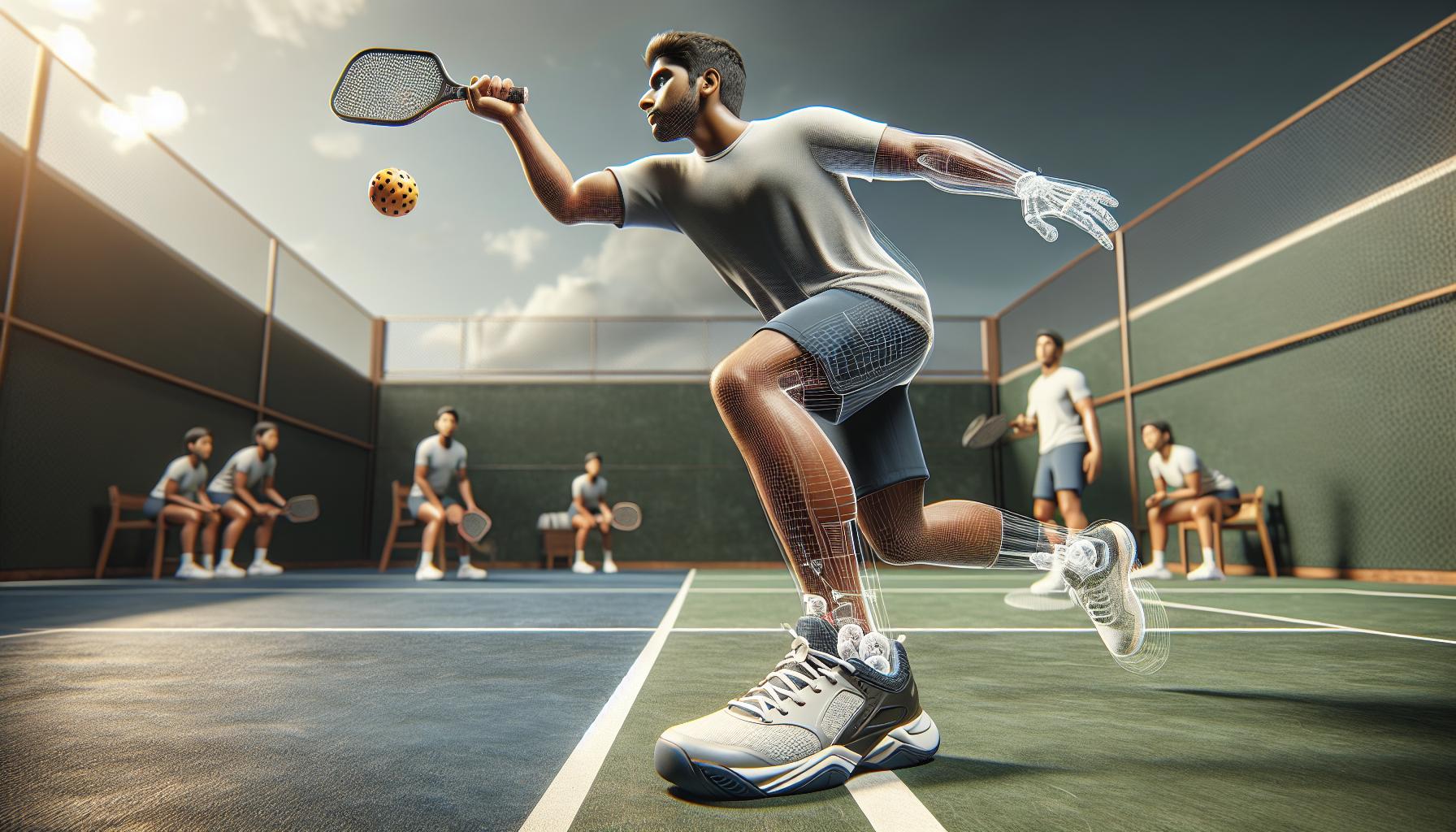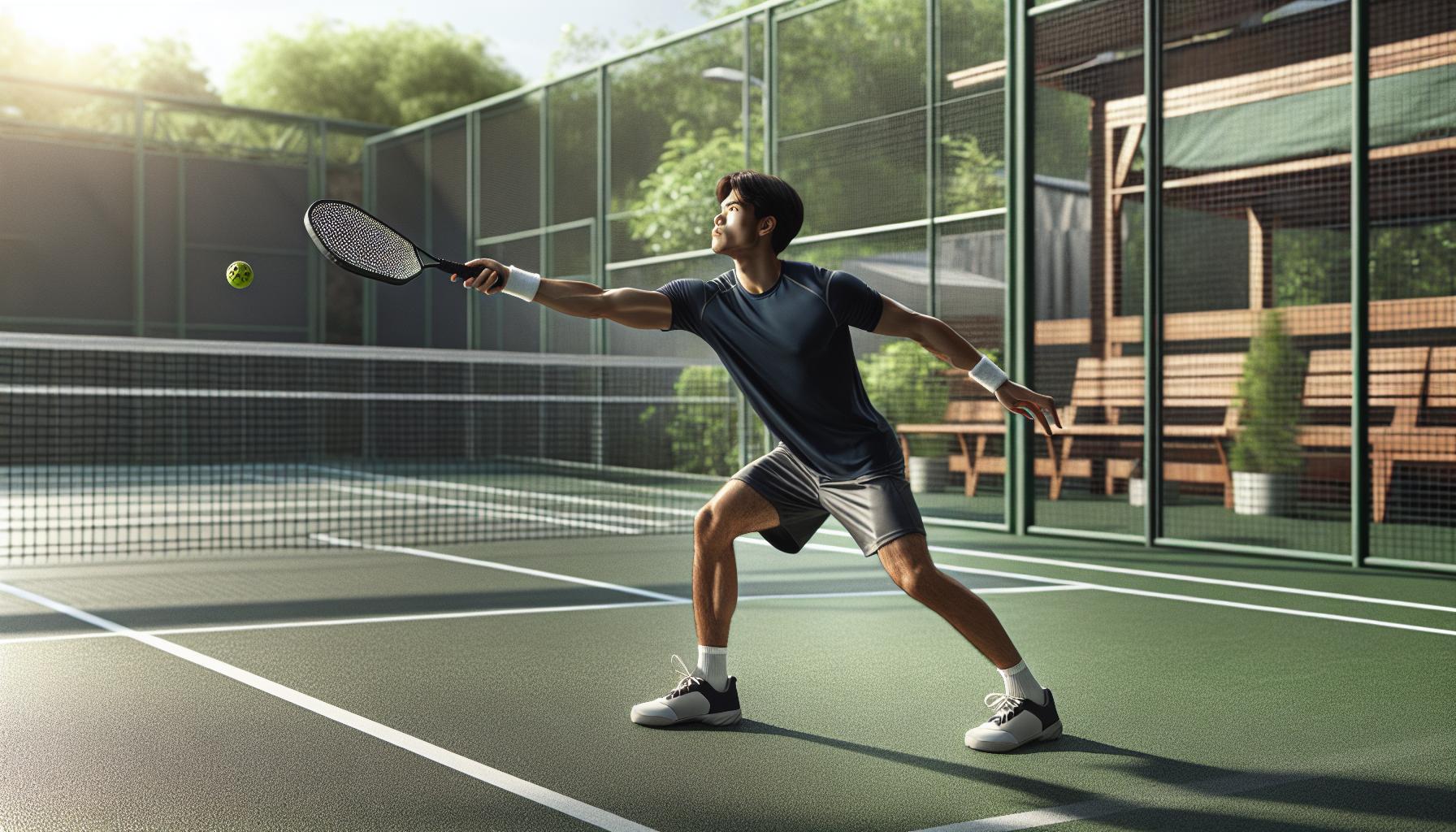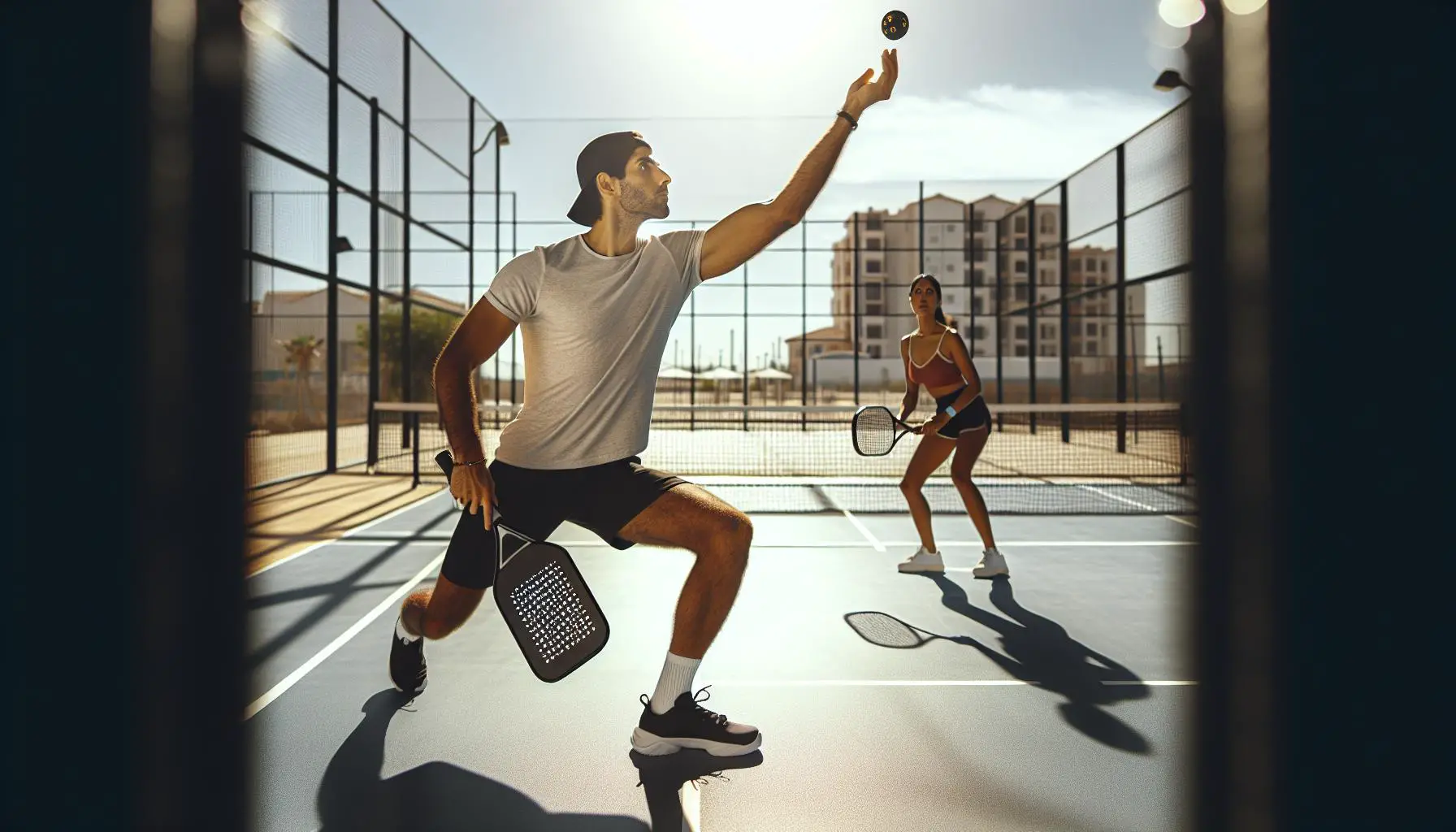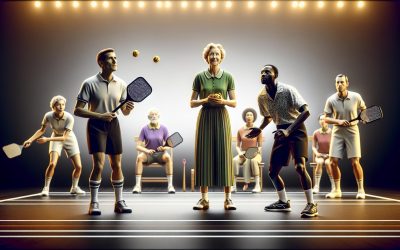Pickleball’s skyrocketing popularity isn’t just about the fast-paced action or the friendly competition; it’s also about mastering the nuances of its rules. Among these, understanding when and how to re-serve can be a game-changer. Whether you’re a beginner eager to learn the ropes or an experienced player looking to brush up on your knowledge, getting the lowdown on re-serve rules is key.
Navigating the re-serve rules in pickleball can seem daunting at first, but it’s actually quite straightforward once you get the hang of it. Knowing when you’re allowed a do-over and how to execute it properly can not only keep the game moving smoothly but also give you a slight edge over your opponents. Let’s dive into the ins and outs of pickleball’s re-serve rules and get everyone up to speed.
Understanding Pickleball Re-Serve Rules
Pickleball, a sport that blends elements of tennis, badminton, and ping-pong, has rapidly gained popularity for its simple yet strategic gameplay. However, even seasoned players can find certain rules, like re-serving, a bit perplexing. Understanding when and how to re-serve in pickleball isn’t just about avoiding penalties; it’s about seizing opportunities to maintain the upper hand in a match.
A re-serve occurs under specific circumstances that do not fault the server. It’s crucial for players to recognize these situations to capitalize on a second chance without losing their serve. The most common scenarios permitting a re-serve include a serve hitting the net but still landing in the appropriate service court, and any instance of interference from an external element like a stray ball from another court.
Key Re-Serve Situations
- Net Contact: If the ball touches the net on the serve but lands in the correct service box, the server gets another attempt.
- External Interference: Play is halted and reset if the game is disrupted by elements or actions outside of the players’ control.
Players, both beginners and advanced, should bear in mind that not all faults lead to a re-serve. Certain mistakes, such as stepping into the non-volley zone while serving or missing the service area entirely, result in a direct loss of serve. Mastery of re-serve rules empowers players to understand what actions warrant a second serve without conceding their turn.
Strategy and Fair Play
Leveraging re-serves effectively involves a good grasp of strategy and fair play. Players can sometimes use the re-serve rule to their advantage, taking a moment to recalibrate or apply psychological pressure on their opponents. However, it’s important to play within the spirit of the game, respecting opponents and the rules established to ensure a fair and enjoyable match for everyone involved.
For those looking to refine their serving techniques and understanding of the game, professionals suggest practicing various serve types and familiarizing oneself with re-serve scenarios. Participating in clinics or workshops can also offer deeper insights into effective strategies for serving and other aspects of pickleball gameplay.
Mastering the re-serve in pickleball requires a blend of knowledge, skill, and sportsmanship. Players who dedicate time to learning the nuances of the rules and applying them thoughtfully during play not only enhance their own experience but also contribute to the vibrant and growing pickleball community.
When Can You Re-Serve in Pickleball?
Understanding when a re-serve is allowed in pickleball can drastically impact the flow and strategy of the game. It’s not just about getting a second chance; it’s also about knowing the rules well enough to use them to your advantage.
Firstly, net contact serves that land in the appropriate service court grant the server a second attempt. This rule helps maintain the momentum of the game, ensuring that minor errors don’t overly penalize players. It’s seen as an encouragement for players to serve with confidence, knowing they have a safety net for marginal errors.
External interference is another scenario warranting a re-serve. If the ball is disturbed by an outside force, such as wind or an object or person entering the court, players are entitled to reset. This ensures fairness and maintains the integrity of the match, as external factors should not dictate the outcome of a game.
Let serves are a specific instance covered under the re-serve rules. If a served ball touches the net but still lands in the correct service box, the serve is considered a let, and the server is permitted to serve again without penalty. This rule mirrors those found in other racket sports, providing consistency across competitive play.
However, not all faults result in a re-serve. Here are conditions under which a re-serve is not permitted:
- Service attempts that land out of bounds.
- Serves that don’t clear the net.
- Foot faults, where the server steps into the wrong area during the serve.
These rules are in place to ensure fairness and challenge players to maintain precision and control during serving—key components of high-level pickleball play.
In addition, players must be aware of the two-bounce rule, which affects serving and receiving. While not directly related to re-serves, understanding this rule is crucial for effective gameplay. The ball must bounce once on each side before volleys are allowed, emphasizing the strategic depth of pickleball beyond serving.
| Condition for Re-Serve | Allowed? |
|---|---|
| Net Contact | Yes |
| External Interference | Yes |
| Let Serves | Yes |
| Out of Bounds | No |
| Non-clearance of Net | No |
| Foot Faults | No |
How to Properly Execute a Re-Serve

Understanding how to properly execute a re-serve in pickleball can significantly impact a player’s effectiveness and confidence on the court. When a scenario presents itself for a re-serve—be it because of a let serve, external interference, or other allowable reasons—it’s crucial for players to reset mentally and physically to make the most out of the opportunity.
First and foremost, the server must ensure they are positioned correctly behind the baseline, with both feet not touching the line until after the ball is struck. This stance is foundational because it minimizes the risk of committing a foot fault, which would nullify the serve altogether.
Next, the focus shifts to the serving motion. Players should keep their movements smooth and consistent. A common mistake is overcomplicating the serve due to the pressure of the re-serve, leading to unforced errors. Players are encouraged to maintain their usual serving routine to help stay calm and focused.
In terms of strategy, the server has a unique chance to reassess their opponent’s positioning and weaknesses during a re-serve. For example, if the opponent struggled with a deep serve to the backhand in previous exchanges, it might be advantageous to target that area again, assuming the serve execution is within the rules.
Practice Makes Perfect
Practicing re-serves during training sessions can further boost a player’s prowess in executing them effectively during matches. It’s not just about serving; it’s about adapting. Drills that mimic real-game scenarios where re-serves are prompted can aid in preparing players for these moments. Players should focus on:
- Accuracy and consistency in hitting specific areas of the court.
- Adjusting power based on the distance and desired speed of the ball.
- Footwork and body positioning to ensure a legal serve is achieved without compromising power or accuracy.
In addition to physical preparation, mental rehearsal or visualization techniques can be employed. Visualizing successful serves and positive outcomes can bolster a player’s confidence and reduce anxiety when the pressure is on for a crucial re-serve.
Leveraging the Rules
Understanding the rules around re-serves is just as critical as knowing how to execute them. Players should familiarize themselves with the specific conditions that allow for a re-serve to avoid disputes on the court. Knowledge of these rules not only helps in making informed decisions during play but also in strategizing around the use of re-serves.
Common Mistakes to Avoid When Re-Serving
When it comes to pickleball, mastering the re-serve can significantly impact a player’s game. However, it’s just as important to be aware of common pitfalls as it is to understand the mechanics and strategies behind effective re-serving. Avoiding these mistakes can lead to more consistent and powerful serves, providing a competitive edge.
Not Knowing the Rules
A fundamental mistake many players make is not fully understanding the rules surrounding re-serves. Ignorance of the rules can lead to unnecessary faults or disputes during a game. For instance, many are unaware that a serve touching the net and landing in the correct service box is a let and can be re-served without penalty. Players should take the time to familiarize themselves with the official rulebook of pickleball to ensure they make informed decisions on the court.
Poor Foot Positioning
Foot positioning is crucial for a successful re-serve. Some players mistakenly step on or across the baseline before making contact with the ball, which is considered a fault. To avoid this:
- Keep both feet behind the baseline until after the ball is hit.
- Practice footwork drills to improve balance and control during the serve.
Lack of Practice
Re-serves present a unique opportunity to regain control or momentum in a game, but they require practice to execute effectively. Skipping practice sessions or not dedicating time to work on re-serving techniques can be detrimental. Regular practice helps players:
- Develop muscle memory for more accurate serves.
- Adjust their serve based on the opponents’ weaknesses.
- Increase their confidence in using re-serves strategically during matches.
Overthinking the Serve
While strategy and precision are important, overthinking during a re-serve can lead to errors. Players often put too much pressure on themselves to make the perfect serve, resulting in unnecessary tension and a higher likelihood of faults. To combat this, they should:
- Focus on keeping a clear mind.
- Use visualization techniques to imagine successful serves.
- Remember that re-serves are a second chance and not a situation that demands perfection.
- Use more force when serving into the wind.
- Reduce power and increase spin when serving with the wind
Tips to Improve Your Re-Serve Game

Pickleball players know that mastering the re-serve is crucial for gaining an edge in competitive games. Whether you’re a beginner trying to minimize faults or an intermediate player working to polish your serve, these tips will help elevate your re-serve game.
Practice Makes Perfect
It’s a tried and true saying for a reason. Regular, dedicated practice sessions are key to improving not just your re-serve, but all aspects of your pickleball game. Focus on the mechanics of your serve, from your stance to the swing, and ensure consistency in your movements. Use drills specifically designed to enhance re-serve skills, such as serving to different zones of the court to increase precision.
Visualize Success
Before each serve, take a moment to visualize a successful serve. Imagine the trajectory of the ball, the point of impact on the paddle, and where you want the ball to land on the court. This brief mental rehearsal can boost confidence and focus, leading to more effective serves.
Analyze Your Footwork
Footwork is often overlooked in the serving process. Yet, proper foot positioning is essential for a powerful and accurate serve. Make sure your feet are shoulder-width apart, with the foot opposite your paddle hand slightly forward. This stance provides balance and allows for a fluid motion throughout the serve.
Adjust for Wind Conditions
Playing outdoors means contending with the wind, which can greatly affect the path of the ball. On windy days, adjust your serving strategy accordingly. If you’re serving into the wind, aim higher and with more power. Serving with the wind at your back? Reduce power and aim lower to maintain control of your serve.
Serve Strategically
Instead of just getting the ball over the net, think about how to make your serve a strategic part of the game. Target your opponent’s weak spots—typically, their backhand. Also, vary your serve speeds and angles to keep your opponents guessing and off-balance.
Keep Learning and Adapting
The game of pickleball is constantly evolving, and so are its players. Stay informed about the latest strategies and techniques by watching professional matches, attending workshops, and practicing with players who have a higher skill level than you. Their insights and experiences can provide valuable lessons that you can incorporate into your own game.
Conclusion
Mastering the art of re-serving in pickleball isn’t just about getting the ball over the net. It’s about turning the serve into a strategic advantage. By focusing on the mechanics, practicing consistently, and adapting to both the environment and opponents, players can elevate their game significantly. Remember, improvement doesn’t happen overnight. But with dedication and the right approach, anyone can transform their serve into a powerful tool in their pickleball arsenal. So grab your paddle, hit the court, and let every serve count.














0 Comments